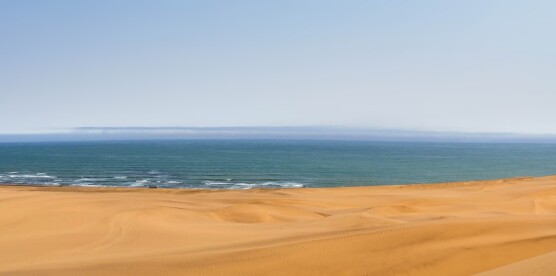Namibia received its second UNESCO World Heritage Site in 2013. The Namib Sand Sea covers an enormous area of 3077700 hectares, with an additional 899500 hectares designated as a buffer zone and within the Namib-Naukluft Park.
This area commences just south of the Kuiseb River and includes Sandwich Harbour and Sossusvlei. The Namib Sand Sea is an area of outstanding natural beauty and a unique coastal fog desert encompassing a diverse range of giant, shifting dunes.
It is an exceptional example of scenic, ecological, geomorphological, and evolutionary consequences of wind-driven processes interacting with biology and geology.
The Namib is an extremely dry desert but surprisingly supports a remarkable diversity of animals and unique plants.
Scenic, ecological, geomorphological, and evolutionary consequences of wind-driven processes interact with biology and geology.

These animals and plants have evolved adaptations which enable them to live in this hostile environment. For example, many species have developed ways of trapping moisture from the fog that creeps in from the coast.
This fog can extend up to 50 km’s into the desert, providing a lifeline to many of its inhabitants. This was shown in David Attenborough’s ‘Planet Earth 2: Deserts’. Several scenes showed a Palmato gecko licking its eyeballs to get liquid that had formed from the early morning moisture.
Another fascinating display of this adaptation to this arid environment is the fog-basking Namib desert beetle. This tiny beetle positions its body at a 45-degree angle against the dune with its head facing down and collects moisture from the air onto its back. Moisture accumulates to the point where it is sufficient, and the beetle lifts its leg for the water to drip down into its mouth.


